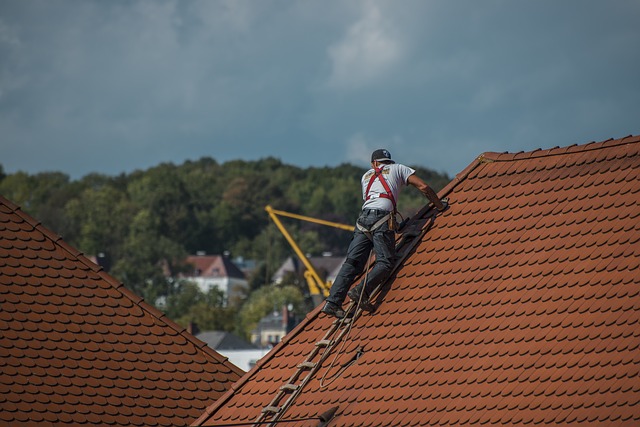What are the Differences between Shingle and Tile Roofs and Life Expectancy of a Roof?
When it comes to roof replacements, the common choice is between a tile roof and a shingle roof. More often than not, homeowners are torn about which one to choose.
But before you choose a type of roof, it’s best to know the lifespan of each one. Also, you should consider the benefits and environment on which it will be installed.
Here’s a comparison of the tile and shingle roofing to guide you in choosing the right roof replacement. These are all things you should know if you are going to give flipping properties a valiant effort!
Tile Roofing
The biggest difference of tile roofing to shingle is that it’s made of clay or concrete. This roof is made from terra cotta which overlaps on each other when installed on the roof. Such placement allows the tile roofing to ward off water.
Also, tile roofs have an additional seal which strengthens its endurance against outdoor elements. It’s usually the choice among areas that are prone to hurricanes and natural disasters.
Another advantage of tile roofing is its flexibility. You can style it in different ways. You can give it a Mediterranean, Southwest, or a classic look. The only common gripe about this roof is it has a more demanding installation process and an expensive cost.
Moreover, tile roofing contractors can usually offer a warranty of as much as 50 years to brand new roofs. For high-end tile roofing, it can last by as much as a century. But for typical installations, it can last around 30 to 40 years.
Shingle Roofing
In North America, shingle roofing is the common option. Unlike tile roofing that’s made from clay or concrete, shingles are made from sheets of asphalt. These are small and rectangular sheets that are overlapped to keep the water away.
Asphalt is the material used for shingle roofing since it has excellent waterproof properties. The biggest benefit to shingle roofing is it’s easier to install and has a very low cost.
Also, shingles come in different shapes, sizes, and colors. It’s the reason why those on a budget but still looking for aesthetics opt for this type of roofing.
Shingle roofing also reflects sunlight very well which reduces the heat transfer into your home. This is the reason why the shingle roof is ideal for hot weather. It’s also strong enough to withstand fire damage and algae.
However, you should keep in mind that shingle roofing will start to lose its quality if exposed to intense moss growth and debris. Still, shingle roofing can be maintained using a specialized cleaner or regular servicing from roofing contractors.
Tile vs. Shingle Roofing
Wondering which one suits your home? Here are the main differences between tile and shingle roofing.
-Lifespan
If installed properly, a tile roof can last for more than 50 years with minimal maintenance routines. Most tile roofers will provide at least a 30-year guarantee for their work. Meanwhile, shingle roofing would usually last around 20 to 25 years.
Still, take note that all roofs would need replacements once it reaches 60 years of age. Also, the lifespan of your roof will depend on the environment and preventive maintenance conducted over the years.
-Climate resistance
Climate is one of the most important aspects when choosing a type of roof replacement. For Southeast areas where the climate can become very hot, shingle roofs are an ideal choice. During snowy seasons, shingle roofs are excellent too since it lets the snow slide through its surface.
However, if your area has a consistently cold climate, you’re better off with a tile roof. It has better strength in holding thick layers of snow without caving in. Also, it’s not easily damaged by freezing temperatures.
-Maintenance
Tile roofing requires very minimal maintenance. In fact, it can go on for years without requiring any special cleaning. On the other hand, shingle roofing needs a special cleaner to remove moss and debris which may start the degradation of the asphalt material.
So if you want a low maintenance roof, you can opt for the tile type. However, the cost is much higher and you need to hire the service of a professional roofer.
Additional tip
Before you pick any of the roof types, make sure that your property’s structural integrity can support the weight of any of these roofs. Tile roofs tend to be higher and will need a more solid foundation.
If you’re not sure of your roof choice, always ask the help of a professional roofer. They can help assess your property and check the strength of the structure. Most importantly, professional roof contractors will let you explore various roof options.
